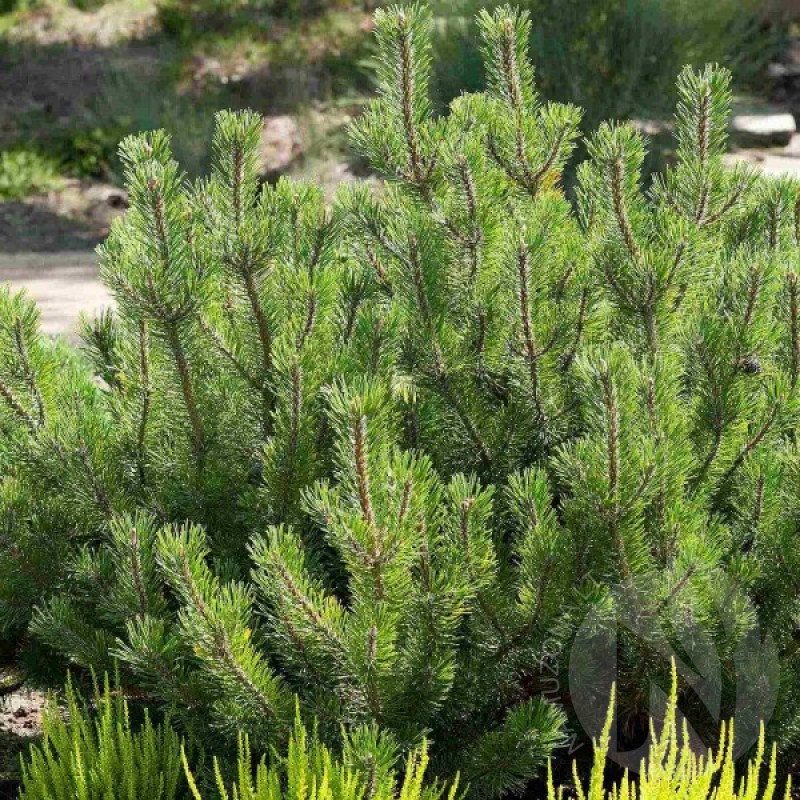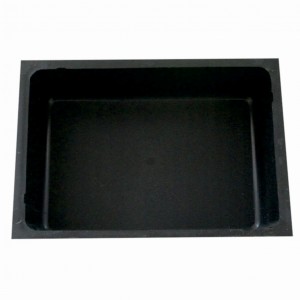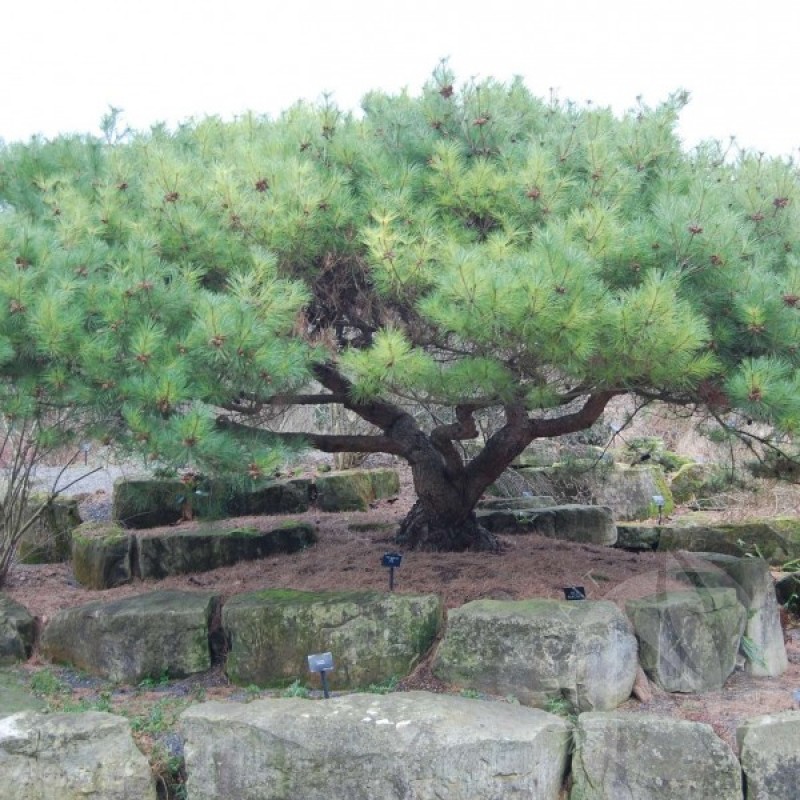
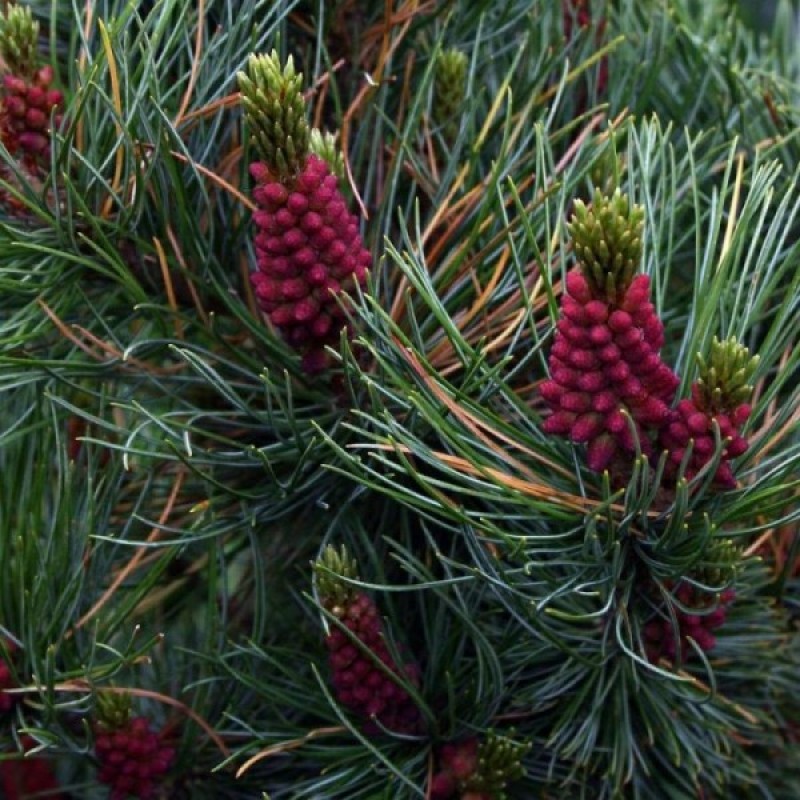
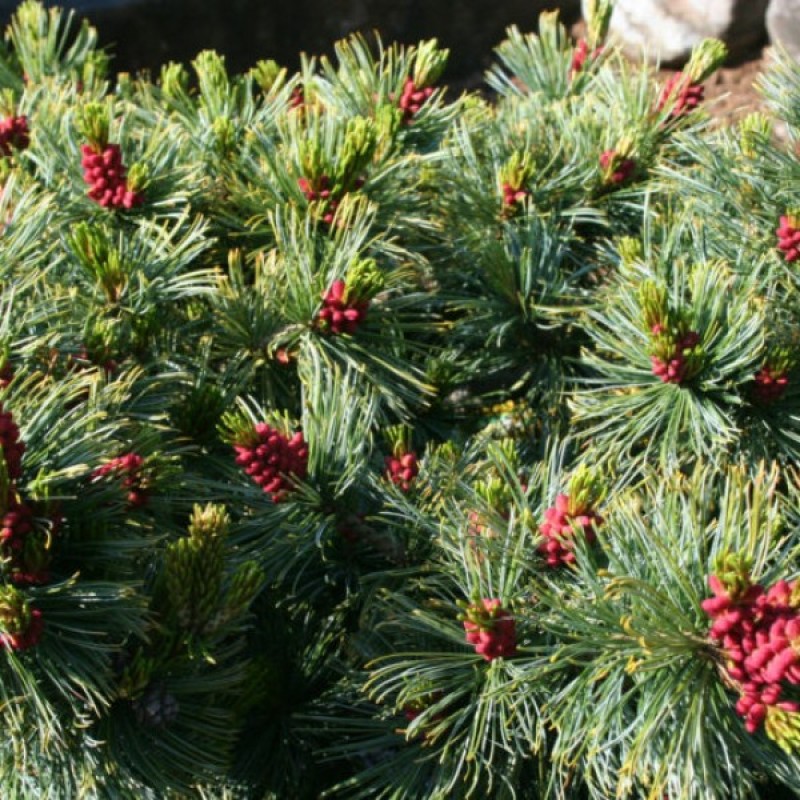
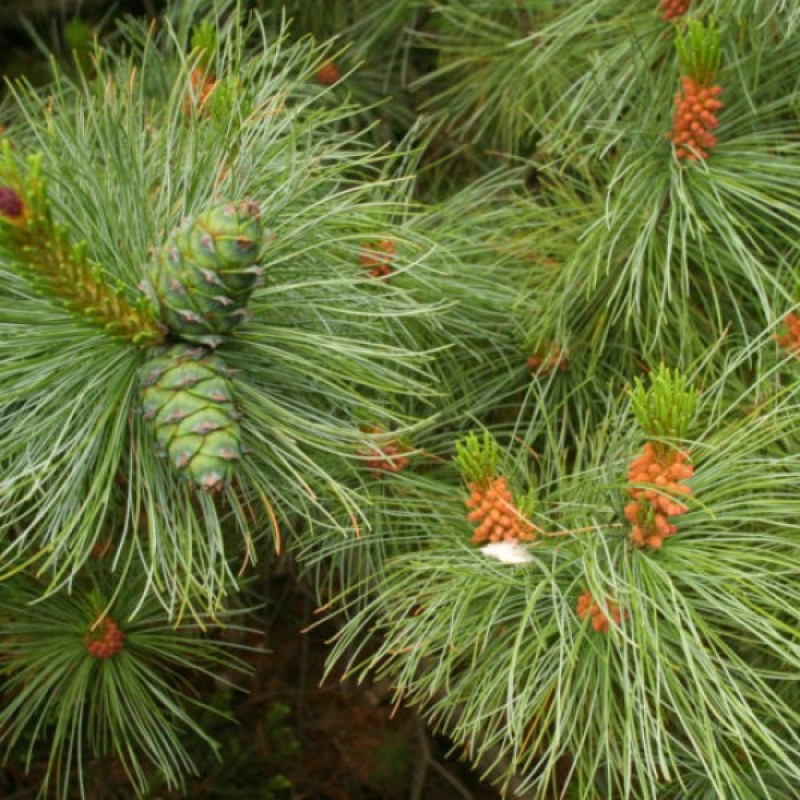
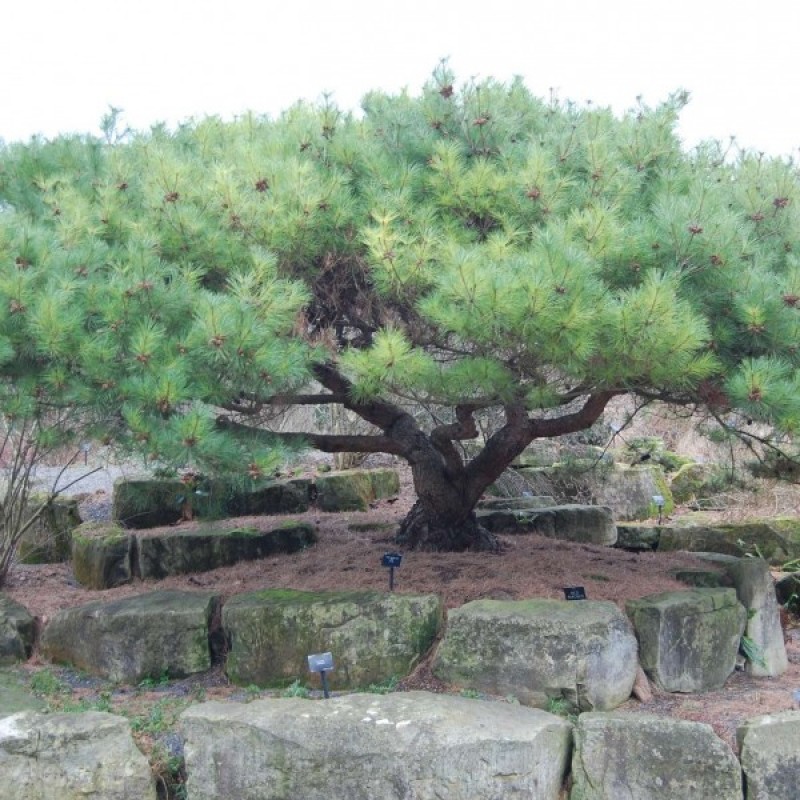
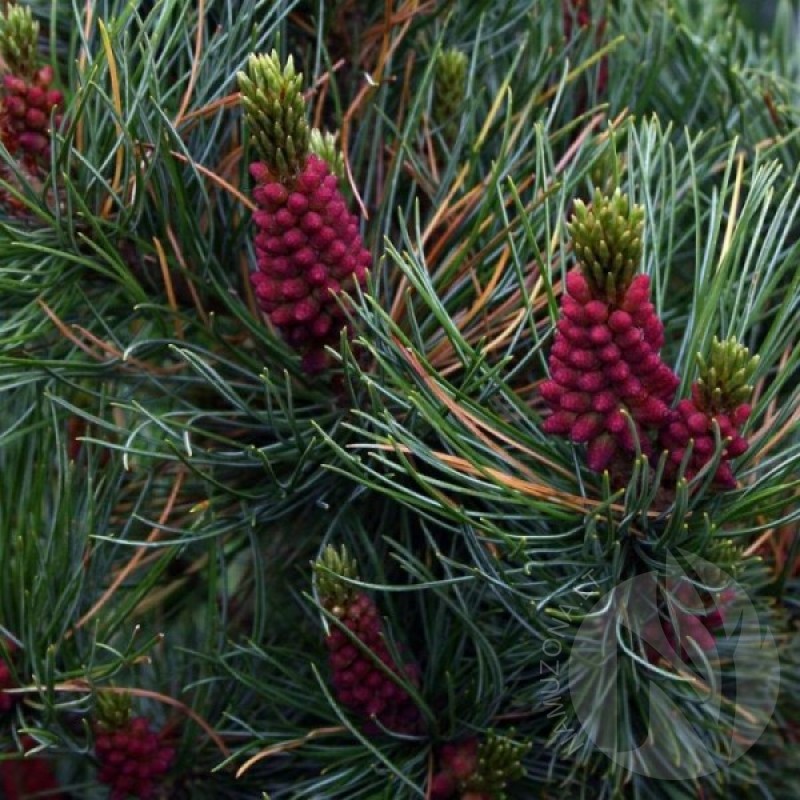
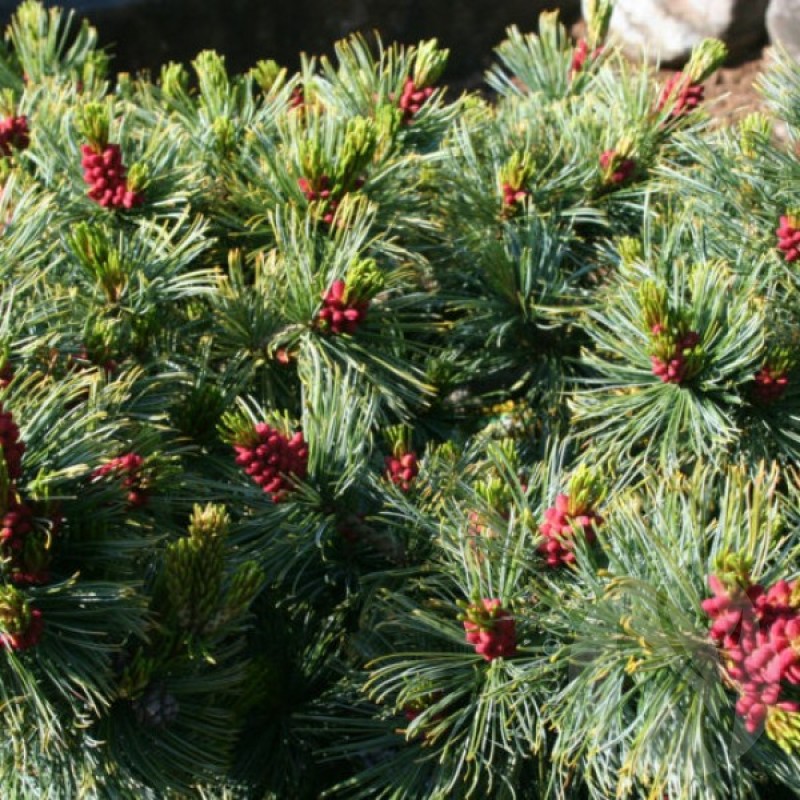
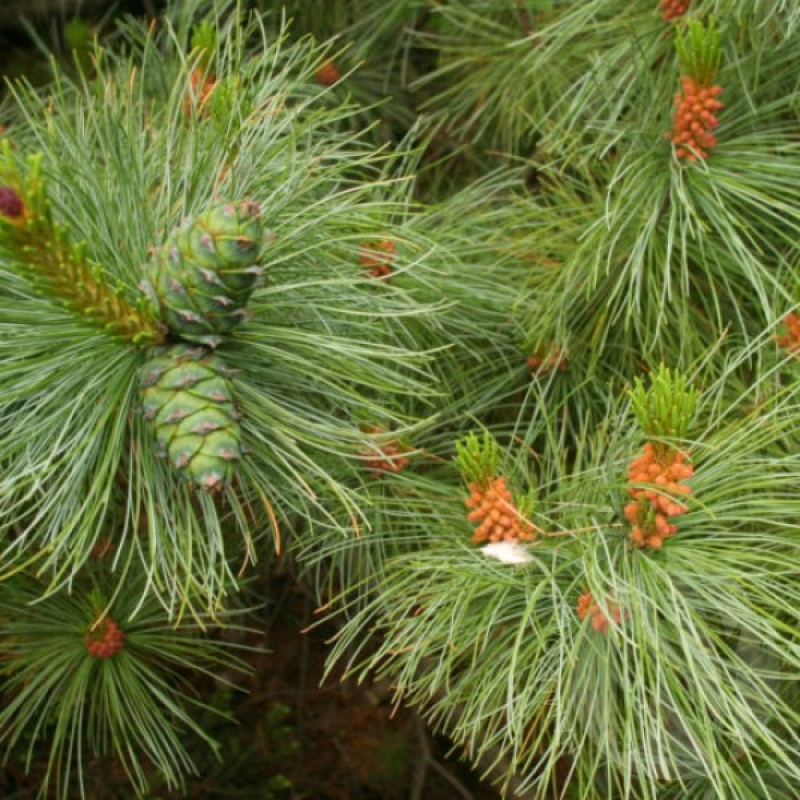
PAY ATTENTION!
All seeds (except SOLD OUT) are available for immediate shipping and will be dispatched within 1-2 business days.
INFORMATION NEEDED? PLEASE CONTACT US NOW!
This low, spreading, little-known evergreen from East Asia is as handsome as the popular Mugho pine (Pinus mugo), but less trouble-prone.
The long, rigid, dark blue-green needles of this shrubby pine occur in bundles of five. They densely clothe the ascending to prostrate branches. In spring, plants produce clusters of tiny male cones and egg-shaped female cones near the branch tips. The erect cones are sheathed with fleshy, resinous green scales that turn woody and brown (or purple) as they mature. The scales remain closed, relying on browsing animals to release the seeds.This slow-growing pine eventually forms a broad, low to tall shrub.
This lovely and adaptable pine does best in full sun and well-drained, humus-rich soil. It fares poorly in parched, hot climates. It makes an excellent subject for mixed borders, foundation plantings, rock gardens, and bonsai. It is little troubled by the pests and diseases that plague the often overused Mugho pine.
Genus - Pinus
Species - Pumila
Common name - Japanese Stone Pine
Pre-Treatment - Required
Hardiness zones - 3 - 7
Height - 6'-20' / 1.80 - 6 m
Spread - 30' / 9 m
Plant type - Shrub
Vegetation type - Evergreen
Exposure - Full Sun
Growth rate - Slow
Soil PH - Acidic, Neutral
Soil type - Loam, Sand, Well Drained
Water requirements - Average Water
Landscape uses - Container, Feature Plant, Foundation, Mixed Border, Rock Garden / Wall, Topiary / Bonsai / Espalier
Leaf / Flower color - Green / --
GERMINATION INSTRUCTIONS
1. Place the seeds in a container with tepid water and soak them for 24 hours. Change the water and wait another 24 hours.
2. Put the seeds in a small plastic bag and cover with damp sand. Place the bag holding the seeds in the refrigerator for one to two months to stratify the seeds, which is preserving seeds in layers of moisture-laden peat, soil or sand. Check the sand and water as needed to maintain moisture. Don't allow the seeds to get soaked.
3. Fill small pots with compost. Place one or two pine seeds on top of the compost in each pot, then cover the seeds with a thin layer of sand.
4. Water the sand and compost to add moisture, then place the pots in a warm, sunny location. As the seedlings emerge and grow, the soil needs to remain moist, not wet.
5. Repot the pine trees into medium-sized pots in the fall. Grow them in the pots for the following season until they are large and strong enough for transplanting into the landscape.
Atsiliepimų apie šią prekę kol kas nėra.
No questions about this product.

